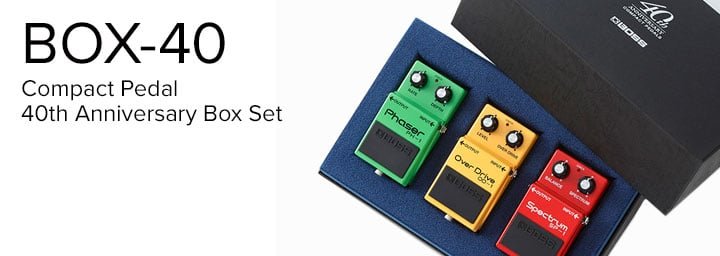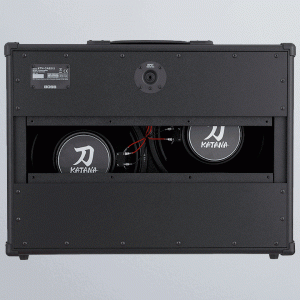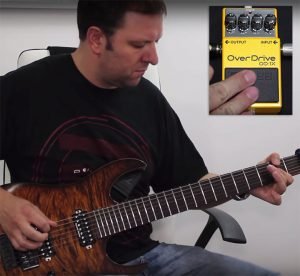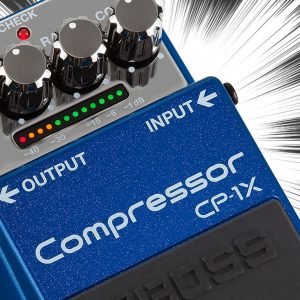As we discovered in our previous article, effects pedals prior to 1977 were quite clunky. Big and cumbersome, effects pedals were barely on the average guitar player’s radar throughout most of the 70s. This was due to the high cost, low production numbers and inconvenient nature of these boxes.
BOSS changed all that in 1977, with a total rethink of the design, usability, and practicality of effects pedals. Ever since then, the BOSS Compact Pedal design is considered the “gold standard” in compact effects pedal design. Today, it’s challenging to find an effects pedal that doesn’t owe something to BOSS’ unique design, introduced 40 years ago.
At the 1977 NAMM show, the new and innovative BOSS Compact Pedal design presented to the guitar world arrived in the form of 3, now legendary pedals.
These were the SP-1 Spectrum, the PH-1 Phaser….and the game-changing OD-1 OverDrive.
It wasn’t just the design that caught the guitar world’s attention though. These 3 effects pedals sounded absolutely fantastic…and still do! The OD-1 OverDrive in particular holds a special significance, as it presented a new kind of distortion, previously unheard in a guitar effects pedal.
In this article, we’ll continue our journey back in time, looking closely at BOSS’ 3 legendary 1977 pedals and outline what made them, and especially the OD-1, so significant.
The future is now – compact guitar pedals with daring new sounds
SP-1 SPECTRUM

The SP-1 Spectrum has had a lot said about it over the years. In production from November 1977 to November 1981, it had a relatively short lifespan and low production numbers.
For these reasons, the SP-1 is considered THE most collectable (and valuable) BOSS Compact Pedal for collectors. Today, it fetches big prices on the used market (if you can find one).
So what does it do exactly?
Essentially, it’s a single-band, parametric EQ Boost with two knobs. The SPECTRUM knob enables continuously variable setting of frequencies in the range of 500Hz to 5 kHz. The BALANCE knob sets the peak of the selected frequency.

It was actually more popular with keyboard players and bassists than guitar players. Why? Bass players found it useful for cleaning up “muddy” tone. Keyboard and electric piano players used it to augment their sound, for clarity and brightness.
Roland’s founder, Mr. Ikutaro Kakehashi has described the SP-1 as an “atmospheric filter” and “a really different kind of effect, designed for producing a flashy, shimmering kind of sound.” At its time of release, there really was nothing like the SP-1 as it wasn’t a distortion or a chorus, like previously released BOSS effects. It was a new effect and the only effect of its kind.
The “cult classic” appeal that surrounds the SP-1 is in part due to the limited release of the pedal, the fact that it was among the first of the new design BOSS pedals and the unique tones that it could produce, with very little effort. Although it wasn’t a knockout pedal on its release, it’s still capable of very usable results. In fact, it’s great for that snappy, almost phased kind of funky guitar sound!
It also has an undeniable mystique about it, thanks to its rarity and significance in BOSS’ history.
PH-1 PHASER
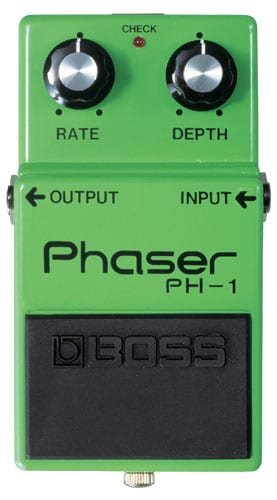
With the rise of funk music in the 1970s, the demand for phaser pedals was increasing rapidly. BOSS responded to the call with the PH-1 Phaser, a lush and smooth sounding phaser that’s gone on to augment the sound of many a spacious guitar, bass or synth!
Most popular phaser pedals of the day featured just a single control knob which controlled the RATE of the phasing effect. The PH-1 added a DEPTH control, which enabled the effect to be either super subtle, or lush and rich at the user’s discretion. Since the PH-1’s RATE control was freely adjustable from an ultra-low speed of 16 seconds to a high speed of 100 milliseconds, the PH-1 could handle a range of settings.
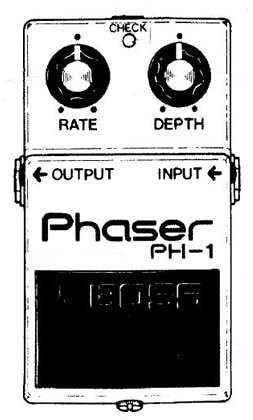
It provided sharp rhythm accentuation, soft arpeggios or big jet sounds, in combination with distortion. The PH-1 later spawned the PH-1R (which added a Resonance knob), the PH-2 Super Phaser (which featured dual phase modes) and the legacy of the original still lives on today with the PH-3 Phase Shifter.
OD-1 OVERDRIVE

The big one.
It’s nearly impossible to understate the significance of the BOSS OD-1 OverDrive. Context is important here, so let’s take a trip further down memory lane!
The famous rock guitar sounds of the 1960s and 70s required players to plug into tube guitar amplifiers and turn them all the way up. The further tuned up they were, the more they started to reach their limits and distort. This sound was, as it turned out, a very desirable sound – but had the side effect of being attainable only at ear-bleeding volumes. This was what spawned the initial development of fuzz pedals.
The original intention of fuzz pedals was to recreate the sound of an overdriven amp, at lower volumes. In this task, they weren’t quite up to the job. They did, of course, became revered for their own unique fuzzy tones. The OD-1 OverDrive was a fresh piece of engineering from the team at BOSS. It was a landmark of guitar technology.
Its unique “asymmetrical overdrive circuit” used an op-amp chip to create a rich, harmonic tone, that retained all the nuances of a player’s picking technique, similar to an overdriven tube amp. When played into a clean amp, the OD-1 astounded guitar players of the time with its “amp-like” feel. Finally, for the first time ever, guitarists had access to organic, amp-like overdriven sounds at reasonable volume levels!

Further to this, when used in front of an already driven tube amp, the OD-1 took the amp’s sound to new levels of gain and sustain. Jeff Beck was an early pioneer of this technique, using the BOSS OD-1 and before too long, it seemed that every guitar player on the planet was buying an OD-1 to use on their amp.
The OD-1 became a major sales success and put BOSS firmly on the map as the major player in the stompbox game. Other pedal manufacturers took notice of the OD-1’s ability to make a tube amp scream and were soon releasing their own pedals with many striking circuit design similarities to the OD-1 (though just enough difference to avoid a lawsuit!).
Indeed, some of the biggest selling pedals of all time owe much of their success to the original design work that the BOSS team implemented in the breakthrough OD-1 OverDrive pedal. The OD-1 began a legend that has never really left us. Its many iterations, incarnations and spiritual successors are still in production to this day. They include the SD-1 Super OverDrive, the OD-3 OverDrive, the OD-1X pedal and the Waza Craft SD-1W.
40 Years of Innovation
BOSS’ 3 groundbreaking pedals introduced at the 1977 NAMM event successfully managed to change the course of effects pedal design.
Previously, effects pedals had merely been “boxes that made an effect”. BOSS Compact Pedals spearheaded a movement towards design excellence. It’s an ethos to create products that focus as much on the user experience, as the sound of the pedal.
The SP-1, PH-1 and OD-1 will forever enjoy the status as the 3 pedals that introduced the world to the enduring legacy of the BOSS Compact Pedal.
It’s a legacy which continues to inspire creativity in musicians everywhere, from bedrooms to festival stages. BOSS is looking forward to the next 40 years of pedals and the results of what creative and brilliant musicians can achieve with these iconic stompboxes.
Learn more about the BOSS 40th Anniversary Box Set here and more about the 40th Anniversary of BOSS, here.
Related Articles
BOSS CULT CLASSICS
TONES IN TIME – 70S ROCK
BOSS PEDALS OF THE PROS
TONES IN TIME – 60S ROCK
ECHOES IN TIME: THE HISTORY OF BOSS DELAY PEDALS
TONES IN TIME – 50S ROCK ‘N ROLL


